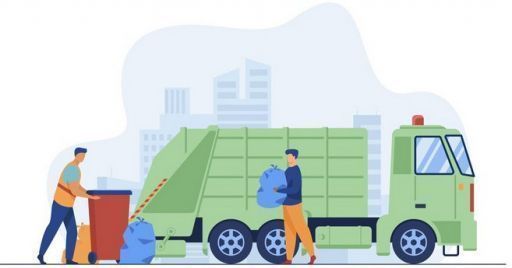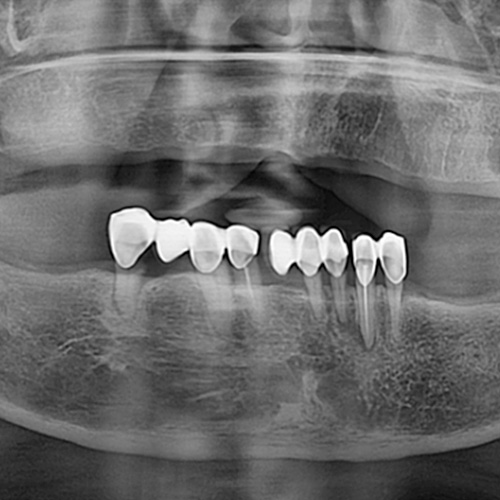Rome, 30 Oct – If in Europe the overall production of urban waste stands at around 230 million tonnes per year, in Italy, there is a “fluctuating trend in the last decade, the decreases of which are linked to the contraction of consumption and the introduction of new regulatory provisions which have modified the definition or method of accounting for the collection and management of MSW” (municipal waste)”.
For example, in our country the production of urban waste, “in 2022 is just under 30 million tonnes, down compared to 2021” and door-to-door collection (manual), “although this data requires more information on to management in the territories”, represents a “significant percentage within the collection system”.
This is remembered in a recent document produced by the Technical Consultancy for Health and Safety (CTSS) of Inail which, starting from the size of the sector that deals with the collection and management of urban waste, focuses extensively on the risks and prevention for those who work there.
The new document – entitled “Health and Safety for waste collection and urban hygiene operators” and edited by Annalisa Guercio (Inail, Ctss General Directorate) – is also based on what is reported in some previous Inail documents: the booklet “Safety for waste collection and urban hygiene operators” (Inail, 2009) and the publication “SGSL-U Guidelines – Health and safety management system for water, environmental, energy and funeral service companies”.
The document, as indicated in the introduction, is the result of one sector study conducted by the CTSS of Inail and developed over the years through “direct observation of multiple production realities and with activities implemented by Inail consisting of agreements and protocols, since 2009, with Federambiente, Fondazione Rubes Triva and Utilitalia”. And its objective is that, “after a careful evaluation of the potentially synergistic work risks present in these highly complex operations”, to illustrate “the appropriate prevention and protection systems, both collective and individual, of a managerial, organizational and technological-planning, indicating interventions to improve working conditions”.
In the article presenting the document we focus on the following topics:
Waste collection: accident trends in the urban hygiene sector
Let us first of all focus on a sheet of the document which presents theaccident trends in the urban hygiene sector.
It is indicated that as part of the Memorandum of Understanding between Inail and Utilitalia (a federation that brings together companies operating in public water, environmental, electricity and gas services), “numerous collection studies” were carried out , analysis and reporting of statistics on accidents and occupational diseases”. And from an analysis, referring to the five-year period 2013-2017 for the specific sector of interest, “there is a decrease in accidents equal to 6.4% compared to 2013 compared to an increase in employees per year of 13% and is comparable to the trend found for the complex of companies that deal with urban hygiene in Italy (-2%) compared to a similar increase in the number of employees per year (+13% versus +10%)”.
However, despite this decrease, “theaccident frequency index (62.93 injuries per 1,000 employees/year) turns out to be more than three times that of Industry and Services management of the Inail Premium Rate as a whole, characterizing the urban hygiene sector as a sector with a high accident frequency”.
It should also be noted that the majority of accidents “occur without the involvement of the means of transport and lead to an average of approximately 30 days per year of absence from work for operators, mainly Italian men; the age group of operators most affected is 50-64 years and the main damages are dislocations, strains, sprains and bruises”. Furthermore, from the analysis of the causes and circumstances of the accidents, it appears that “the most frequent ways in which the injury occurred are physical or mental effortcrushing on/against an object and contact with a blunt material agent, due to body movements, slipping, loss of control”. The place most affected by accident events is “the place open to public transit without restrictions, therefore the public street; the type of work most at risk is that linked to complementary activities (in particular management, collection and treatment of waste) and to circulation with and without means of transport”.
Finally, “dorsopathies and shoulder injuries are the main occupational diseases recognized by companies in the sector”.
Safety in waste collection: what is meant by urban hygiene?
Before presenting the index of the document and making subsequent in-depth studies on health and safety in the sector, we remind you that with the term “urban hygiene” means “a service that is part of the integrated management of the urban waste cycle, also including the phases following collection: recycling, reuse, recovery, treatment and disposal”.
In particular, waste collection and urban hygiene activities “have the particularity of taking place ‘on the road‘, i.e. in a place, public or private, not directly managed by the company to which the workers who carry out the operations belong”. And the “road work” consists – continues the document – “in a series of activities for the protection and decorum of the territory, sweeping, collection, transport and movement of waste, carried out manually and with mechanical means, i.e. with work equipment used for the transport of people and materials ”.
We refer you to the full reading of the Inail document which focuses extensively on street work with reference also to what is prescribed by the legislation and especially by the Legislative decree 9 April 2008, n. 81.
The index of the Inail document
In conclusion, we report the index of the Inail document “Health and Safety for waste collection and urban hygiene operators”.
Preface
The current framework of waste management
1 Risk assessment methodology
2 Urban hygiene activities
2.1 Waste collection
2.1.1 Manual collection
2.1.2 Mechanized harvesting
2.2 Road sweeping
2.2.1 Mechanized sweeping
2.2.2 Manual sweeping
2.3 Other activities
2.4 Innovative collection and urban hygiene systems
3 Professional risks
3.1 Security Risks
3.1.1 Risks from working on the road
3.1.2 Risks from interactions with machines and equipment
3.1.3 Risk of accidents linked to the presence of waste
3.2 Health risks
3.2.1 Biological agents
3.2.2 Risk from manual handling of goods (MMC)
3.2.3 Physical agents
3.2.3.1 Vibration risk
3.2.3.2 Noise risk
3.2.3.3 Risks from exposure to natural optical radiation and microclimates
3.2.4 Chemical agents
3.3 The impact of the organization on working conditions and the physical and social working environment
4 Prevention and protection systems
4.1 Prevention systems
4.1.1 General organizational measures
4.1.2 Specific organizational measures
4.1.3 Technical measures
4.1.4 Procedural measures
4.1.5 “Political” initiatives
4.2 Protection systems
5 To remember better: the risk and prevention and protection systems sheets
Glossary
Insights
Tiziano Menduto
Download the document from which the article is taken:
Inail, Technical consultancy for health and safety, ” Health and Safety for waste collection and urban hygiene operators”, edited by Annalisa Guercio (Inail, Ctss General Directorate) – Health and Safety series, 2024 edition (PDF format, 8.23 MB).
Go to the area reserved for subscribers dedicated to “Waste collection and urban hygiene: health and safety for operators”.


